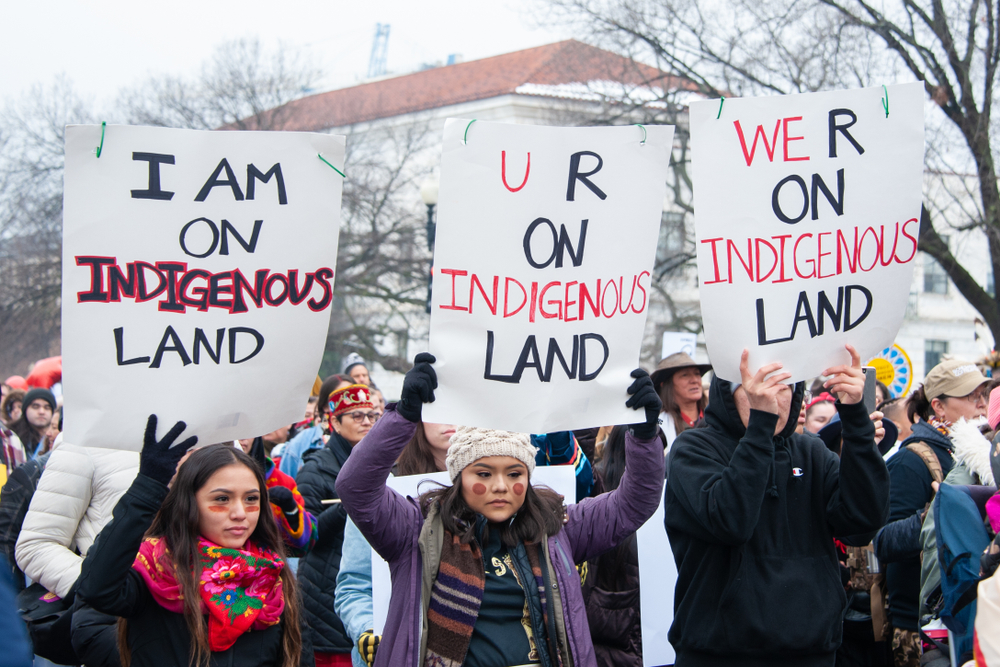Life, Land, and Labor Acknowledgment
as a Practice in Cultural Humility
A life, land, and labor acknowledgment is a formal statement that recognizes and respects Indigenous peoples as traditional stewards of this land and that recognizes and respects the enduring relationship that exists between Indigenous peoples and their traditional territories.
Why do we make this acknowledgment?
Recognizing the land is an expression of gratitude and appreciation to those whose territory we reside on, and a way of honoring the Indigenous people who have been living and working on the land for countless centuries. We recognize that economic progress and development in the San Francisco Bay Area and the state of California resulted from the unpaid labor and forced servitude of African, Mexican, Chinese, and Indigenous peoples. It is important to understand the longstanding history that has brought us to reside on the land, and to seek to understand our place within that history. Land acknowledgments are not merely about historical context; colonialism is a current, ongoing process, and we need to become mindful of our present participation.
Acknowledgments:
- Counter the “doctrine of discovery” with the true story of the people who were already here
- Create a broader public awareness of the history that has led to this moment
- Begin to repair relationships with native communities and with the land
- Support larger truth-telling and reconciliation efforts
- Remind people that colonization an ongoing process, with native lands still occupied due to deception and broken treaties
- Take a cue from Indigenous protocol, opening up space with reverence and respect
- Inspire ongoing action and relationship
What can you do?
In countries such as New Zealand, Australia, and Canada and among tribal nations in the United States, it is commonplace, even policy, to open events and gatherings by acknowledging the traditional Indigenous inhabitants of that land. While some individuals and cultural and educational institutions in the United States have adopted this custom, the vast majority have not. Together, we can spark a movement to change that. We call on all individuals and organizations to open public events and gatherings with acknowledgment of the traditional native inhabitants of the land.
Imagine this practice widely adopted: imagine cultural venues, classrooms, conference settings, places of worship, sports stadiums, and town halls, acknowledging traditional lands. Millions would be exposed—many for the first time—to the names of the traditional Indigenous inhabitants of the lands they are on, inspiring them to ongoing awareness and action.
Acknowledgment is not enough.
Acknowledgment by itself is a small gesture. It becomes meaningful only when coupled with authentic relationship and informed action.
The Native Governance Center has stated the problem inherent in land acknowledgments:
“Every moment spent agonizing over land acknowledgment wording is time that could be used to actually support Indigenous people. It’s easy for land acknowledgments to become yet another form of optical allyship. They often lack a call to action and next steps. Without these components, land acknowledgments are just empty words. They become an excuse for folks to feel good and move on with their lives without actually contributing anything to the community. As President Robert Larsen of the Lower Sioux Indian Community puts it, ‘An apology or an acknowledgment is one thing, but what are you going to do next?’”
Read more about how to create an action plan that goes beyond land acknowledgment in this Guide produced by the Native Governance Center.
What we are doing
Fremont, CA, where APC is based, is the traditional territory of the Ohlone, Miwok, Yokut, and Patwin peoples. Action steps to restore the sovereignty of the Muwekma Ohlone Tribe can be found here.
